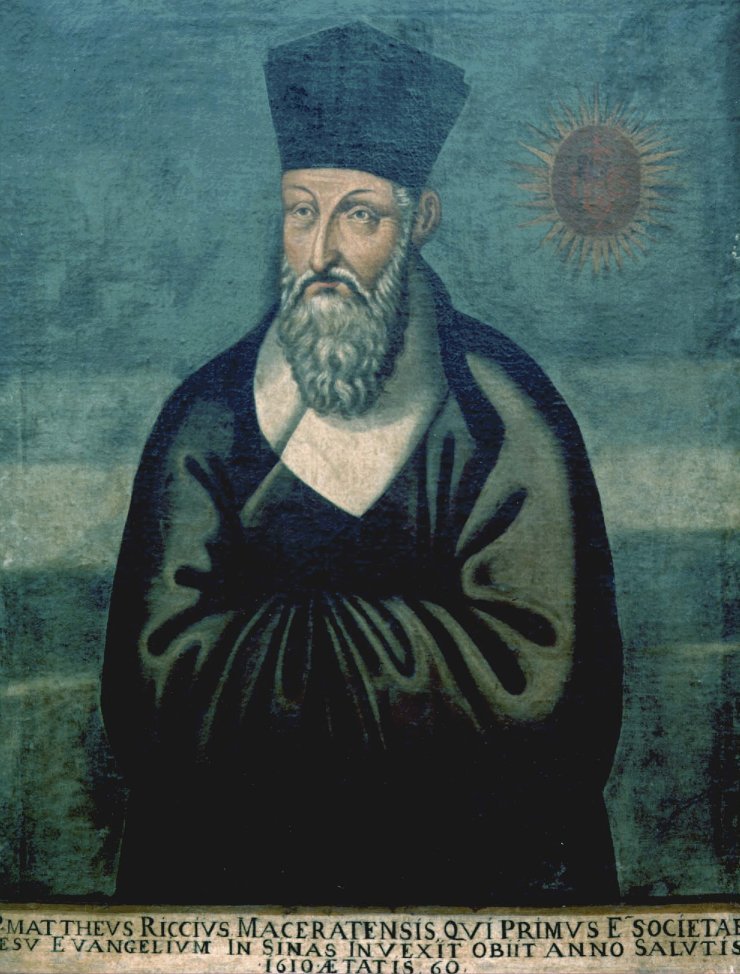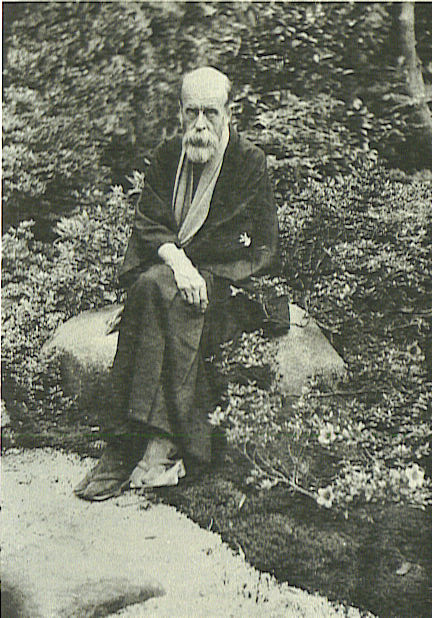|
Yōkwōin
, also known as Prince Sanehito and posthumously named Yōkōin ''daijō-tennō'', was the eldest son of Emperor Ōgimachi. He predeceased his father. Masahito's eldest son was , who acceded to the Chrysanthemum Throne on the abdication of Emperor Ōgimachi. Kazuhito would become known as Emperor Go-Yōzei.Ponsonby-Fane, Richard. (1959). ''Imperial House'', p. 424. Later, Go-Yōzei elevated the rank of his father, even though his father's untimely death made this impossible in life. In this manner, Go-Yōzei himself could enjoy the polite fiction of being the son of an emperor. * 21–25 August 1598 ('' Keichō 3, 20-24th day of the 7th month''): Buddhist rituals were performed in the Seriyoden of the Imperial Palace to celebrate the 13th anniversary of the death of the emperor's father.de Visser, Willem Marinus. (1935). The actual site of Prince Masahito's grave is known. This posthumously elevated emperor is traditionally venerated at a memorial Shinto shrine (''misasa ... [...More Info...] [...Related Items...] OR: [Wikipedia] [Google] [Baidu] |
Tsuki No Wa No Misasagi
is the name of a mausoleum in Higashiyama-ku, Kyoto used by successive generations of the Japanese Imperial Family. The tomb is situated in Sennyū-ji, a Buddhist temple founded in the early Heian period, which was the hereditary temple or of the Imperial Family. Notable interments Kamakura period * 86 Emperor Go-Horikawa * 87 Emperor Shijō Edo period The Imperial Household Agency maintains ''Tsuki no wa no misasagi'' as the place of enshrinement and the venue for veneration of several Edo period emperors. *108 Emperor Go-Mizunoo *109 Empress Meishō *110 Emperor Go-Kōmyō *111 Emperor Go-Sai *112 Emperor Reigen and Takatsukasa Fusako *113 Emperor Higashiyama *114 Emperor Nakamikado *115 Emperor Sakuramachi *116 Emperor Momozono *117 Empress Go-Sakuramachi *118 Emperor Go-Momozono In addition, this is the official misasagi for Prince Masahito, posthumously named Yōkwōin ''daijō-tennō'', who was the eldest son of Emperor Ōgimachi and the father of Emperor Go-Yōzei. ... [...More Info...] [...Related Items...] OR: [Wikipedia] [Google] [Baidu] |
Emperor Ōgimachi
was the 106th Emperor of Japan, according to the traditional order of succession. He reigned from November 17, 1557, to his abdication on December 17, 1586, corresponding to the transition between the Sengoku period of the Muromachi bakufu and the dawn of the new Azuchi–Momoyama period. His personal name was Michihito (方仁).Titsingh, I. (1834). ''Annales des empereurs du Japon'', p. 383. Genealogy Ōgimachi was the first son of Emperor Go-Nara. * Lady-in-waiting ( ''Naishi-no-Suke''): Madenokōji (Fujiwara) Fusako (万里小路 房子; d.1580) later Seiko-in (清光院), Madenokōji Hidefusa's daughter ** Second daughter: Princess Eikō (1540–1551; 永高女王) ** Third daughter (b.1543) **Eldest son: , also known as Prince Sanehito and posthumously named Yōkwōin ''daijō-tennō''. Masahito's eldest son was who became Emperor Go-Yōzei.Ponsonby-Fane, ''Imperial House'', p. 424; this Imperial Prince was enshrined in '' Tsukinowa no misasagi'' at Sennyū-ji. Go-Yōz ... [...More Info...] [...Related Items...] OR: [Wikipedia] [Google] [Baidu] |
Emperor Go-Yōzei
was the 107th Emperor of Japan, according to the traditional order of succession. Go-Yōzei's reign spanned the years 1586 through to his abdication in 1611, corresponding to the transition between the Azuchi–Momoyama period and the Edo period. This 16th-century sovereign was named after the 9th-century Emperor Yōzei, and , translates as ''later'', and thus, he could be called the "Later Emperor Yōzei". The Japanese word ''go'' has also been translated to mean ''the second one'', and in some older sources, this emperor may be identified as "Yōzei, the second", or as "Yōzei II". Genealogy Before Go-Yōzei's ascension to the Chrysanthemum Throne, his personal name (''imina'') was or . He was the eldest son of , also known as Prince Sanehito and posthumously named Yōkwōin ''daijō-tennō'', who was the eldest son of Emperor Ōgimachi. His mother was a lady-in-waiting. Go-Yōzei's Imperial family lived with him in the Dairi of the Heian Palace. The family included at l ... [...More Info...] [...Related Items...] OR: [Wikipedia] [Google] [Baidu] |
1552 Births
__NOTOC__ Year 1552 (Roman numerals, MDLII) was a leap year starting on Friday of the Julian calendar. Events January–March * January 15 – Henry II of France and Maurice, Elector of Saxony, sign the Treaty of Chambord. * February 12 – Pedro de Valdivia founds the Chilean city of Valdivia (city), Valdivia, as ''Santa María la Blanca de Valdivia''. * February 24 – The privileges of the Hanseatic League are abolished in Kingdom of England, England. * March 26 – Guru Amar Das becomes the Third Sikh Guru. April–June * April 8 – Maurice, Elector of Saxony, liberates Augsburg and sets about to capture Charles V, Holy Roman Emperor. * April 11 – Metz Cathedral is consecrated. * April 15 – The Act of Uniformity 1552, Act of Uniformity is given royal assent and imposes use of the Protestant Book of Common Prayer on Kingdom of England, England. * April 16 – Pedro de Valdivia founds the city of La Imperial, Chile. * April ... [...More Info...] [...Related Items...] OR: [Wikipedia] [Google] [Baidu] |
Richard Ponsonby-Fane
Richard Arthur Brabazon Ponsonby-Fane (8 January 1878 – 10 December 1937) was a British academic, author, specialist of Shinto and Japanologist. Early years Richard Arthur Brabazon Ponsonby was born at Gravesend, Kent, Gravesend on the south bank of the Thames in Kent, England to John Ponsonby-Fane, John Henry and Florence Ponsonby. His boyhood was spent in the family home in London and at the Somerset country home, Brympton d'Evercy, of his grandfather, Spencer Ponsonby-Fane."A Biographical sketch of Dr. R. Ponsonby-Fane," ''Studies in Shinto and Shrines,'' p. 517. Ponsonby was educated at Harrow School. He added "Fane" to his own name when he inherited Brympton d'Evercy in 1916 after the deaths of both his grandfather and father. Career In 1896, Ponsonby traveled to Cape Town to serve as Private Secretary to the British Cape Colony, Governor of the British Cape Colony.Ponsonby-Fane, p. 518. For the next two decades, his career in the British Empire's colonial governments ... [...More Info...] [...Related Items...] OR: [Wikipedia] [Google] [Baidu] |
Emperor Go-Tsuchimikado
was the 103rd emperor of Japan,Imperial Household Agency (''Kunaichō'')後土御門天皇 (103) retrieved 2013-8-28. according to the traditional order of succession. His reign spanned the years from 1464 through 1500. This 15th-century sovereign was named after the 12th-century Emperor Tsuchimikado and , translates literally as "later"; and thus, he could be called the "Later Emperor Tsuchimikado", or, in some older sources, may be identified as "Emperor Tsuchimikado, the second," or as "Emperor Tsuchimikado II." Genealogy Before his ascension to the Chrysanthemum Throne, his personal name (his ''imina'') was .Titsingh, p. 352. He was the eldest son of Emperor Go-Hanazono. His mother was Ōinomikado (Fujiwara) Nobuko (大炊御門(藤原)信子), daughter of Fujiwara Takanaga (藤原高長) *Lady-in-waiting: Niwata (Minamoto) Asako (庭田(源)朝子; 1437–1492) later Sōgyoku-mon'in (蒼玉門院), Niwata Shigekata's daughter **First son: Imperial Prince Katsu ... [...More Info...] [...Related Items...] OR: [Wikipedia] [Google] [Baidu] |
Emperor Go-Kashiwabara
was the 104th emperor of Japan, according to the traditional order of succession. He reigned from November 16, 1500, to May 19, 1526. His personal name was Katsuhito (勝仁). His reign marked the nadir of Imperial authority during the Ashikaga shogunate. Genealogy He was the first son of Emperor Go-Tsuchimikado. His mother was Niwata (Minamoto) Asako (庭田(源)朝子), the daughter of Niwata Nagakata (庭田長賢). *Lady-in-waiting: Kajūji (Fujiwara) Fujiko (1464–1535; 勧修寺(藤原)藤子) later Hōraku-mon'in (豊楽門院), Kajūji Norihide’s daughter **First daughter: Princess Kakuten (1486–1550; 覚鎮女王) **First son:?? (1493) **Second son: Imperial Prince Tomohito (知仁親王) later Emperor Go-Nara **Fifth son: Imperial Prince Kiyohiko (1504–1550; 清彦親王) later Imperial Prince Priest Sonten (尊鎮法親王) *Lady-in-waiting: Niwata (Minamoto) Motoko (庭田(源)源子), Niwata Masayuki’s daughter **Third son: Imperial Princ ... [...More Info...] [...Related Items...] OR: [Wikipedia] [Google] [Baidu] |




